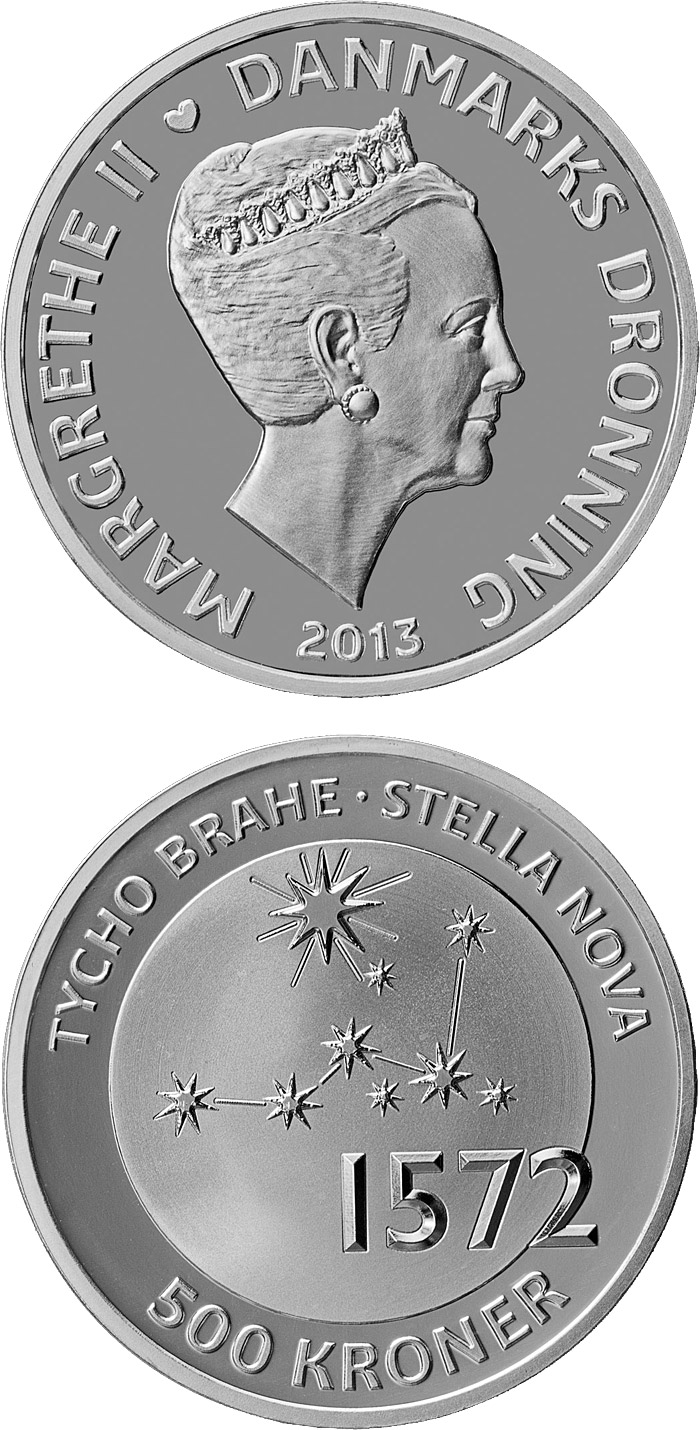500 kroner - Tycho Brahe - Stella Nova
Series: Denmark - The Scientist Series

At the age of 12, Tycho Brahe enrolled at the University of Copenhagen to study law. In 1560 he was so fascinated by an eclipse of the sun that he began to study astronomy in his own time in addition to reading law.
In 1572 – aged 26 – Tycho Brahe discovered a new star in the constellation Cassiopeia. By means of very precise measurements he demonstrated that the star was further from the earth than the moon and hence had to be a fixed star. Tycho Brahe's discoveries were contrary to the prevailing belief that the celestial realm was unchanging. In 1573 he wrote a book about his discovery of the star, Stella Nova (Latin for 'new star').
His discovery proved to be an astronomical sensation, and Tycho Brahe won international acclaim for his observation.
In recognition of these impressive scientific achievements, the Danish king, Frederik II, granted Tycho Brahe the island of Hven as his estate. On the island, Tycho Brahe first built a small castle, Uranienborg, which not only served as his home, but also held a laboratory, an observatory and his library. However, it turned out that the building swayed in the wind so that his measurements became inaccurate. Consequently, Tycho Brahe built Stjerneborg, an underground observatory, nearby. For many years, Tycho Brahe made observations on Hven and developed sophisticated measuring instruments and calculation programmes. Hven attracted many of the scientists of the age, and as a research institution it was unique for its time.